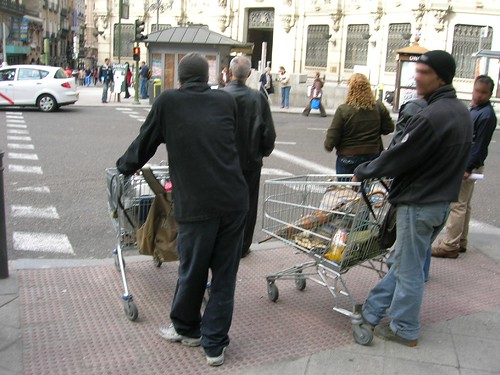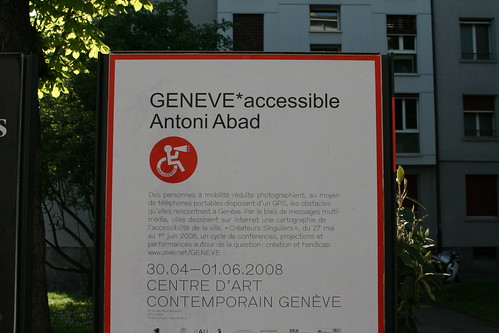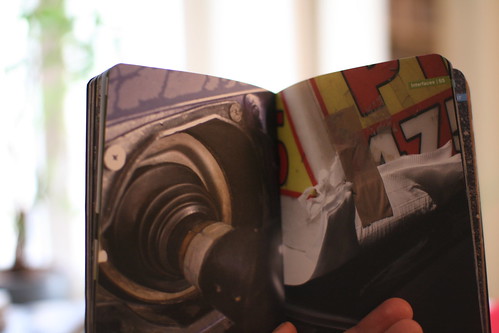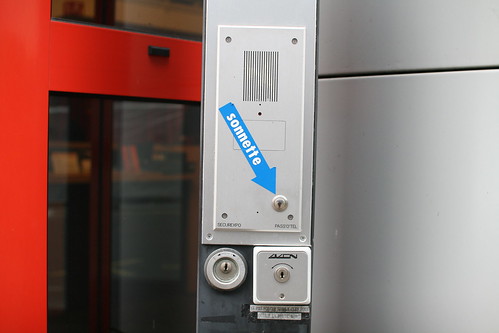If there's a population that is often overlooked (or dismissed) by urban designers or urban technology engineers, it's definitely the homeless. A CHI 2008 paper by Le Dantec and Edwards entitled "Designs on Dignity: Perceptions of Technology Among the Homeless" deals with this topic, trying to understand how technology — from cell phones to bus passes—affects their daily lives. Such a qualitative study allows them to challenge reseachers' assumptions about people's relationship with technology and discuss possible opportunities to develop services.
Using Photo-Elicitation Interview, the researchers identified different unique needs homeless had and characterized perceptions of technology among them. Some excerpts from the results:
"Staying Connected: The first theme was the importance of staying connected to family members and friends during spells of homelessness. (...) Many of the participants came from places other than their current urban home and keeping in touch over distance was something they worried about.
Synchronous v. Asynchronous Connections All of the participants had voice-mail accounts through local organizations. These accounts were meant to provide a stable number of contact and aid in job searches and managing appointments or other personal business. (...) The difficulty for a number of participants was in accessing their voicemail, leading to a decidedly asynchronous style of communication when using the telephone.
Mobile Telephony The preferred way to maintain a stable connection to family and friends for many of the participants in the study was through a cell phone. (...) cell phones were not without problems (...) the ongoing cost, the need for access to power to recharge the phones, and the inevitability of theft when living in and out of shelters.of his extended friends he would tell about being homeless.
Identity Management: For participants in our study, different forms of identity management came out through their use of technology and social institutions. (...) Identity management took both technology- and non-technology-focused forms. For example, on the non-technologic side, identity management appeared in how participants
managed their physical appearance
Access to Information, Social Networks: The social network was the primary mechanism participants in this study used to navigate the world around them.
The Digital Divide: Participants varied widely in the use of information technology, effectively resulting in an internal “digital divide” within the homeless community.
Health and Medication
Getting Around: Moving around the city was an imperative for our participants."
As the authors say, although these needs can suggest opportunities for designed solutions, they find it more relevant to consider the broader implications for urban computing:
The social dynamics that are playfully exposed through urban computing ideas could be more thoughtfully considered in their relation to the less-priviledged participants of the urban environment. Appropriate technologies need to consider more than the usability or psychological appropriateness of an interaction. We need to put careful thought into the social impact technologies have for non-users as well as users. In using technology to redefine boundaries, we have an opportunity to do so inclusively, bringing the periphery into sharper focuses, inviting in the disenfranchised and the under-served. "
Why do I blog this? This kind of research help to figure out alternative vision of current urban computing ideas as it allows to adopt another lens concerning people's relationship with technology and the city. All the issues described in the paper are extremely important to consider the situation in a more holistic way (and certainly not only as a quest for " design opportunities").
In addition, I also find interesting the way some concrete problems are considered here. For instance, the article describes how some homeless people make communication decisions based on their ability to predict cost using pre-paid cellular service. The problem of these phones is that purchased minutes expire after as little as 30 days and phone numbers that become inactive can be reclaimed by the service providers after 90 days (which is difficult for people with irregular incomes). What is interesting here is the notion that the problem is not necessarily about the technology itself but rather the whole model of its deployment (business model). This is a good example of a technosocial situation in which the whole ecosystem should be taken into account if a technology is to be adopted. Of course, in this case, this kind of limit in pre-paid phone contracts is generally aimed at getting rid of this sort of population... :(













